AACtual Therapy – Homemade Ice Cream in a Bag with Dr. Jill Senner and Matthew Baud
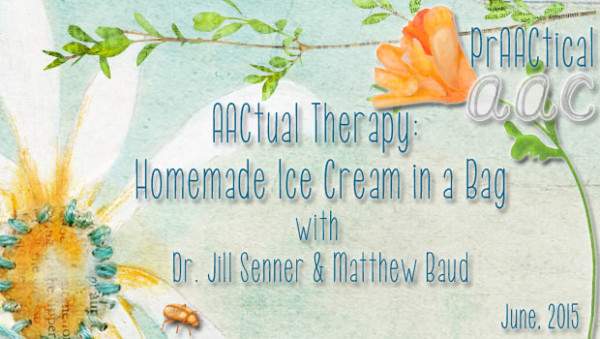
Jill Senner and Matthew Baud are back to share some of their favorite therapy activities. In this post, they discuss how they build language while making ice cream.
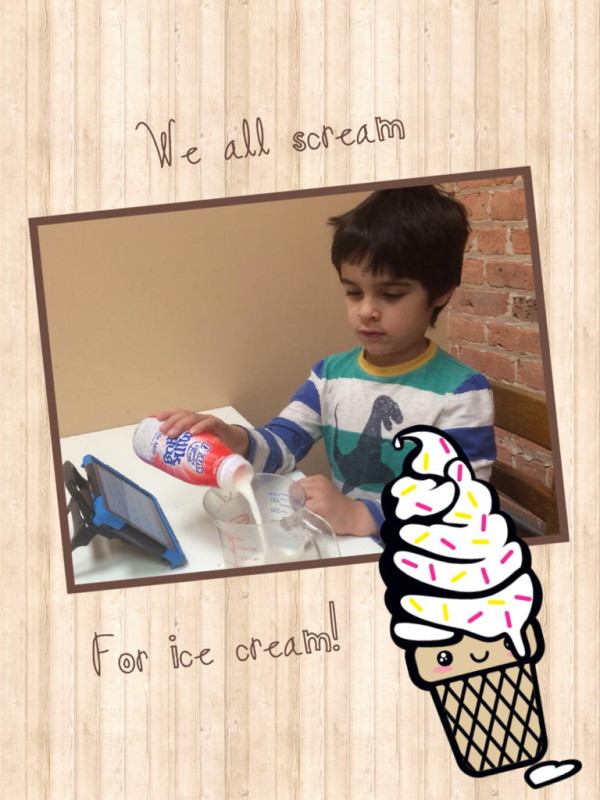
Summer is almost here and we’re already thinking about making our favorite frozen treat, ice cream in a bag. No special equipment is required. With a couple of plastic zipper bags and 5 ingredients already in your kitchen, kids can shake milk into ice cream in just 5 minutes. Free picture recipes can be downloaded here. 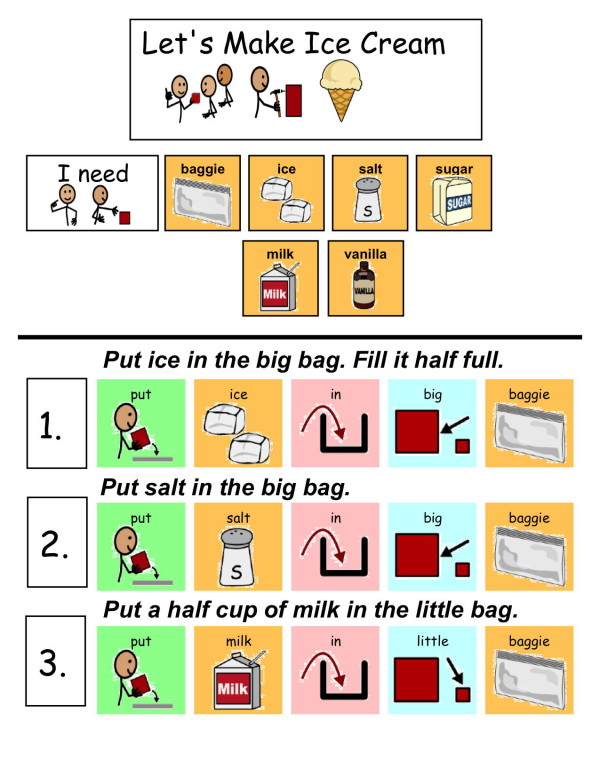
As with many of the cooking activities we love, there are lots of natural opportunities for language use before, during and after cooking.
Before cooking we read the recipe and check the kitchen to see if we have the ingredients. If any are 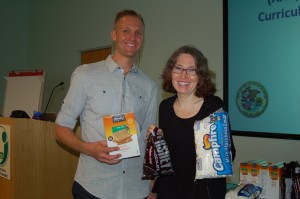 missing, we write shopping lists of ingredients we need. We can take a community field trip to the grocery store where there are numerous opportunities for authentic communication.
missing, we write shopping lists of ingredients we need. We can take a community field trip to the grocery store where there are numerous opportunities for authentic communication.
During cooking, we get, put (in), open, close, shake, eat, and clean. Some children will “need help” if we don’t open the packages for them. The milk is wet, we need big and little baggies, and sugar makes the ice cream sweet. Making ice cream ties into a great science lesson. Did you know that adding salt to ice will not only make it melt but also feel colder??? Yes, indeed, adding salt lowers the freezing point of water! There are math opportunities as well, such as learning about fractions and measurement.
There are a variety of extension activities that we can do after making ice cream:
- Compare & Contrast – Do a taste test and see how this homemade ice cream is like store-bought ice cream and how it differs.
- Reading – There are numerous stories about how ice cream is made such as From Cow to Ice Cream by Bertram Knight, Turning Milk into Ice Cream by Jerome Hawkins, or From Milk to Ice Cream by Stacy Taus-Bolstad. Read and discuss. The books introduce fringe vocabulary such as vat, flavor, and ingredient and offer more opportunities for comparing and contrasting how factory ice cream is made versus homemade ice cream.
- Basic Concept Development – Ice cream is great for teaching about things that are “cold.” Bring additional items of different temperatures for children to touch and describe. Discuss synonyms such as freezing, chilly, and icy.
- Sequencing – Put cards depicting the steps of making ice cream into the correct order. Have the child explain how to make ice cream to a friend or family member.
- Writing – Take and print pictures of the child making ice cream and have the child develop a personal narrative. Save this in a journal to later retell the story to friends and family (see image below).
- Music – Cow Tunes for Kids by Brent Holmes has lots of fun songs about cows and ice cream.
We hope this activity helps keep you and your students cool during the long, hot summer months. I scream, you scream, we all scream for ice cream!
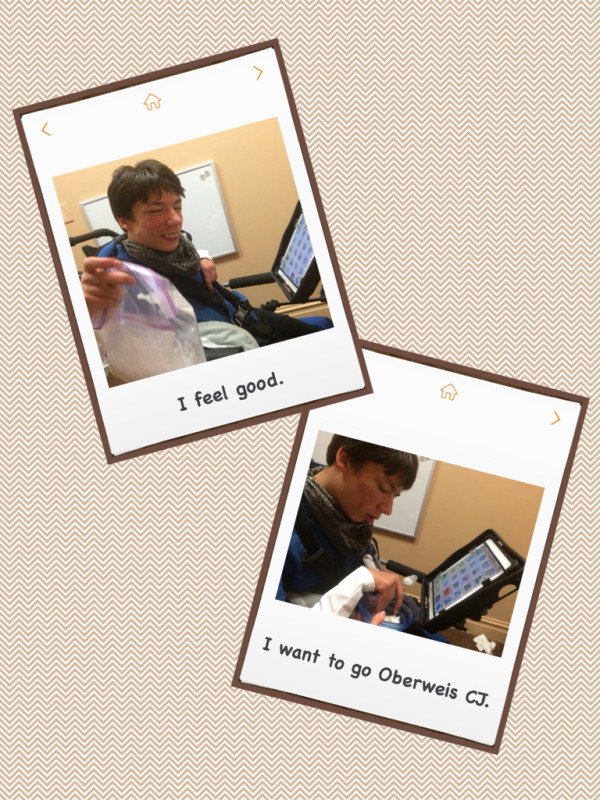
:::::::::::::::::::::::::::::::::::::::::::::::::::::::::::::::::::::::::
Jill E. Senner, PhD, CCC-SLP is a speech-language pathologist with almost 20 years of experience working with children with complex communication needs. She is the owner/director of Technology and Language Center where she specializes in providing augmentative and alternative communication (AAC) and assistive technology (AT) services including assessment, consultation and training, and workshops/lectures. Dr. Senner has presented at numerous national assistive technology conferences and has taught graduate courses in AAC and swallowing disorders. She has published research in the areas of AAC, siblings and disability, and swallowing disorders in cerebral palsy. Her current research interests are focused on communication partner training.
Matthew R. Baud has been working with AAC for the past 13 years. He currently is the Assistive Technology Coordinator at Niles Township District for Special Education (NTDSE) performing evaluations, trainings and coaching of AAC with students, staff and families. Matthew also has his own AAC private practice working with individuals with complex communication needs from birth through adulthood. He is an adjunct professor at Saint Xavier University where he teaches a graduate course in AAC and has presented at several national and state conferences.
Contact Information:
Jill E Senner, PhD, CCC-SLP, Owner and Director, Technology and Language Center, Inc. talcaac@gmail.com
Matthew R. Baud, MS, CCC-SLP, Assistive Technology Coordinator, Niles Township District for Special Education (Mbaud12@gmail.com,Mbaud12, Twitter)
Filed under: PrAACtical Thinking
Tagged With: AACtual therapy, implemention, intervention
This post was written by Carole Zangari

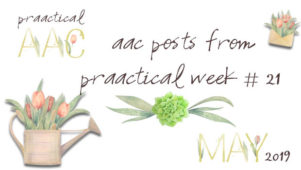
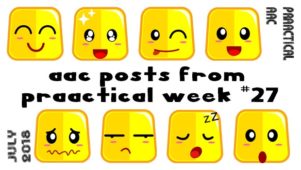
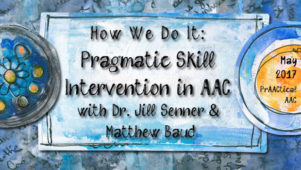
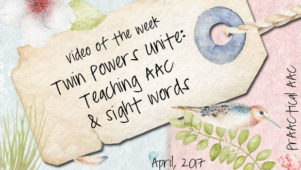
1 Comment
Thank you!!!